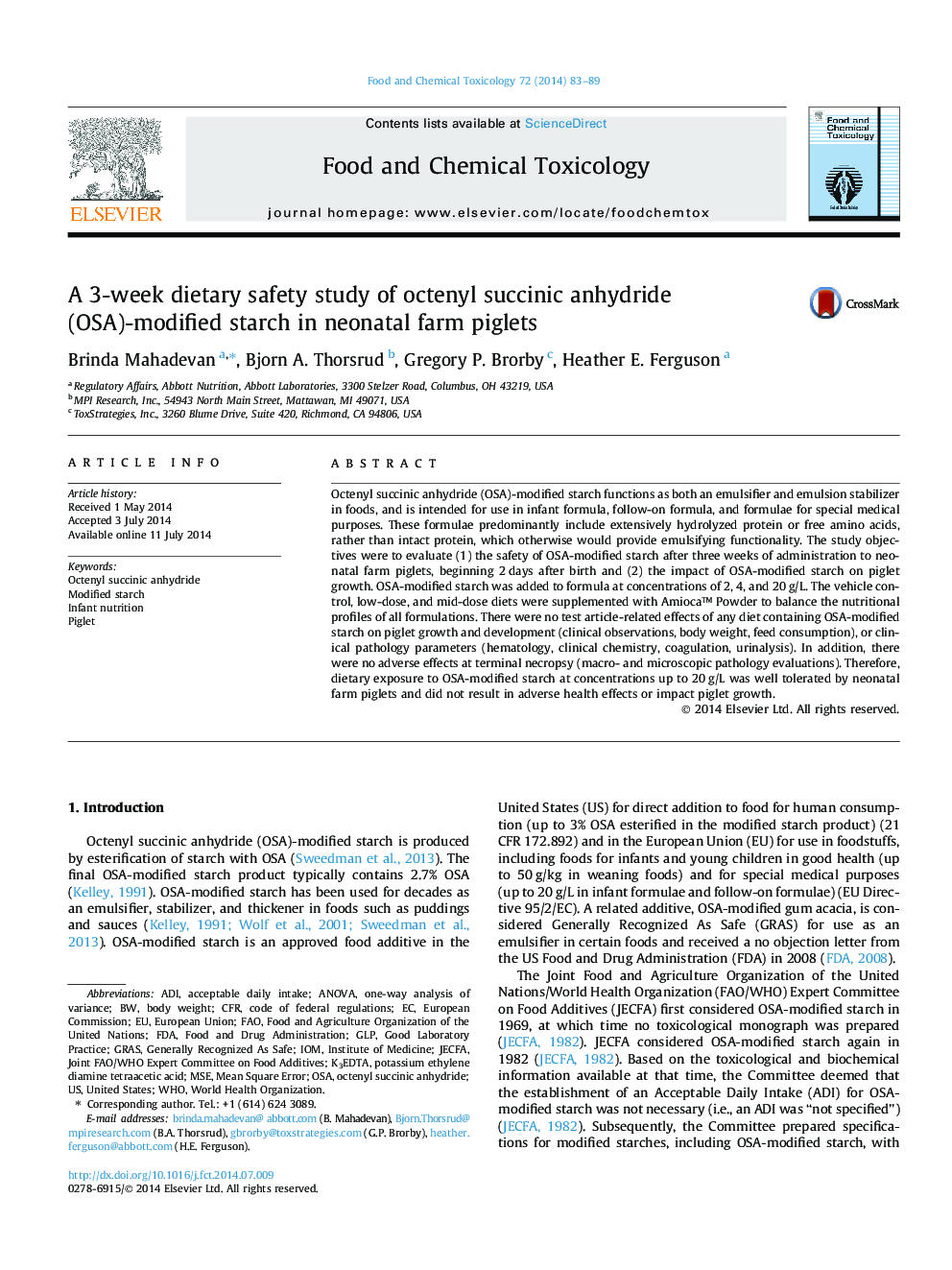| Article ID | Journal | Published Year | Pages | File Type |
|---|---|---|---|---|
| 2584992 | Food and Chemical Toxicology | 2014 | 7 Pages |
•Safety and tolerance study of OSA-modified starch in neonatal farm piglets.•Highest dose level tested was well above projected intake for human infants.•No test article-related adverse health effects were observed after 3 weeks exposure.•All test diets (up to regulatory limit of 20 g/L) were well-tolerated.•Supports the safe use in infant, follow-on, special medical purpose formulae.
Octenyl succinic anhydride (OSA)-modified starch functions as both an emulsifier and emulsion stabilizer in foods, and is intended for use in infant formula, follow-on formula, and formulae for special medical purposes. These formulae predominantly include extensively hydrolyzed protein or free amino acids, rather than intact protein, which otherwise would provide emulsifying functionality. The study objectives were to evaluate (1) the safety of OSA-modified starch after three weeks of administration to neonatal farm piglets, beginning 2 days after birth and (2) the impact of OSA-modified starch on piglet growth. OSA-modified starch was added to formula at concentrations of 2, 4, and 20 g/L. The vehicle control, low-dose, and mid-dose diets were supplemented with Amioca™ Powder to balance the nutritional profiles of all formulations. There were no test article-related effects of any diet containing OSA-modified starch on piglet growth and development (clinical observations, body weight, feed consumption), or clinical pathology parameters (hematology, clinical chemistry, coagulation, urinalysis). In addition, there were no adverse effects at terminal necropsy (macro- and microscopic pathology evaluations). Therefore, dietary exposure to OSA-modified starch at concentrations up to 20 g/L was well tolerated by neonatal farm piglets and did not result in adverse health effects or impact piglet growth.
